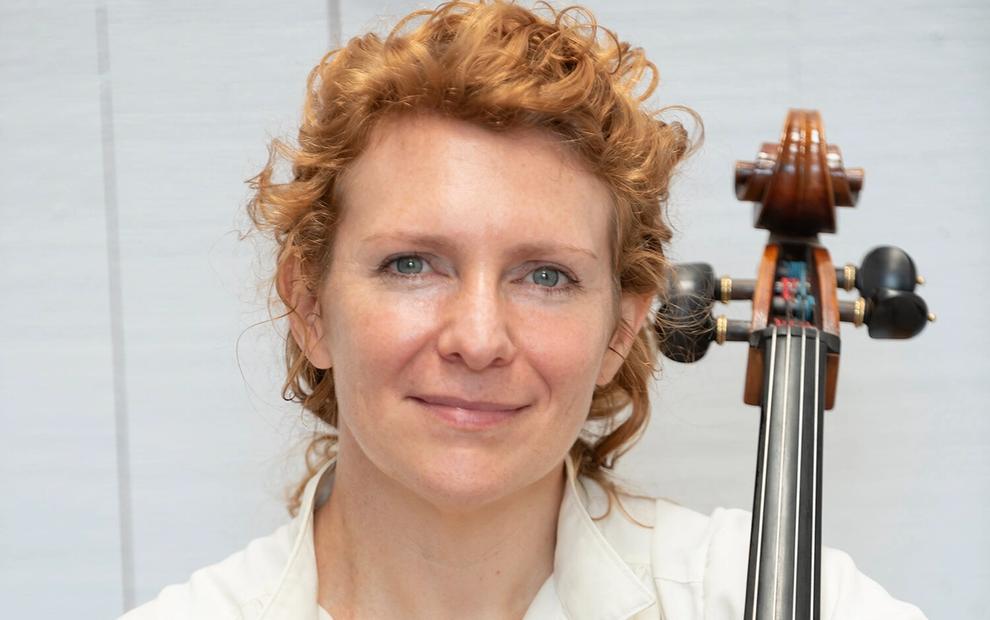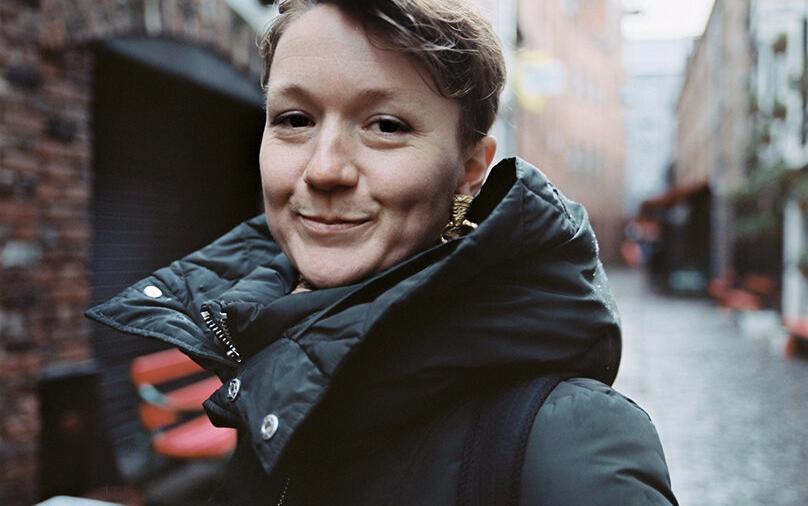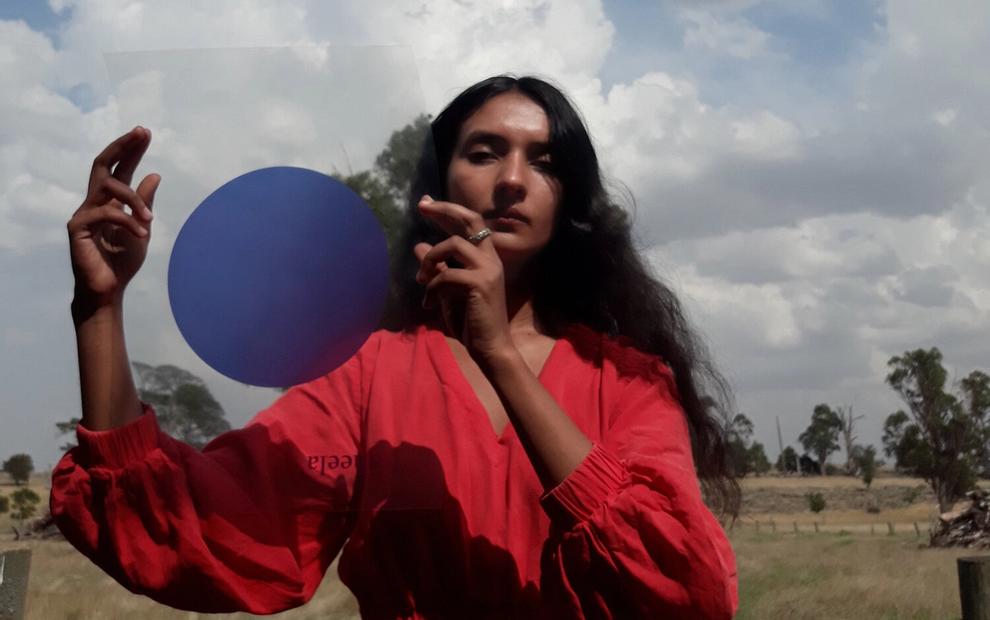

Mooramong Residency: Pia Johnson
Pia Johnson
23 Nov–7 Dec 2020
Residencies are artist-driven and, travel restrictions allowing, take place at Mooramong, a working farm of 4,000 acres that was famously owned by horse racing magnet Donald ‘Scobie’ Mackinnon who remodelled it in 1938 for his movie star wife Claire Adams. Within this inspirational, multi-dimensional setting, invited artists develop a body of work or a site responsive project, and simply undergo a period of structured and intensive research to grow creatively.
The colonial history, architectural flavour, working farm and nature reserve offer a myriad of possibilities for tangential artistic engagement. BLINDSIDE and the National Trust are particularly interested in projects and research surrounding issues of conservation, sustainability, settlement histories and pre-colonial histories specific to the site.
This year we have invited composer Zoë Barry; writer Bonny Cassidy andvisual artist Pia Johnson to undertake solo residencies at Mooramong. If unable to travel, residencies will be undertaken at the artists’ homes in regional Victoria.
The Mooramong residency project will explore the rich and emotional territory of at-homeness and intimate spaces. These themes resonate through my photographic practice that examines notions of identity, belonging and place. Through the use of self-portraiture and performance, the main focus of the residency will be activating the interior and external spaces of the heritage homestead.
Interested in the intimacy of the house, its setting and architecture, the project will ‘read its rooms’ (to borrow the phrase from Gaston Bachelard); in search of a repository of memories and histories – both real and imagined. Using a phenomenological and poetic approach, my time during the residency will explore how as human beings we create spaces of ‘shelter’ that we embody and emotionally take solace in. And how the house ultimately becomes a reflection of ourselves, and our imprint once gone.
The residency is bookended with the movements of journeying – driving across regional country – and will contemplate the synergies and patterns of migration and mobility, with yearnings of sheltering and settling. The residency project aims to bring together the layered perspectives of our journeys and connections to home. To find our place amongst things, in our restless pursuit of purpose, and yet innate sense of displacement.
Australia is still for us not a country but a state of mind. We do not speak from within but from outside. From a state of mind that describes rather than expresses its surroundings or from a state of mind that imposes itself upon rather than lives through landscape and event.
- Judith Wright, “The Upside-Down Hut”, 1969
As I journeyed across the landscape, moving from Dja Dja Wurrung country through to Wadawarrung country, the forested areas, dipping hills and human housing density subsided, and the flat lands of the western plains opened. Videoing small snippets from the side car window, moving forwards, propelled me towards the Mooramong property just a few kilometres out of Skipton.
Even though I had done a range of visual and reading research into the national trust property, the road into Mooramong through paddocks of long grass gave me a sense of a working farm with the strong odour of sheep and hay to welcome me.
The first few days within the property I concerned myself with the homestead and its theatre-like set of vintage furnishings, painted walls and the echoes of social gatherings and parties of the upper echelons of Victoria within its grounds. I became fascinated with the in- between ‘non’ spaces such as entry halls, corridors, annexes and smaller domestic spaces that had an intimacy and weary feel about them, compared to some of the grander and more well documented spaces that the house is better known for.
I photographed nearly every space within the homestead. Capturing its grand scale as well as closer ‘moments’ that capture the delicacy of objects. Like with any living archive some objects felt more ‘authentic’ than others, and the collection of objects created an imaginary picture of living regionally in Victoria from the 1930s through to the early 1980s, with iconic pieces signally shifts within technology and fashion through the eras.
Being able to open up old photo albums, drawers and writing desks (with permission from the trust), gave me a stronger picture of Claire Adams the owner of the homestead, who was an influential and independent woman, and incredibly ahead of her times. While I wasn’t inspired by her story within the making of the work, I think it is important to mention her within the report, as I feel that her legacy of being a woman from overseas coming to Australia with wealth, ideas and capacity to make a difference is still embedded within the homestead and property.
Initially placing myself within the homestead was a way to artistically consider how the spaces would have felt, been lived within and functioned. A photographic body of work developed by creating a ‘character’ that roamed the halls, stopped to look out windows and use the garden in the late afternoon. There is a tension between belonging and feeling ‘other’ that I tried to conjure within the photographs. I wondered what it would have been like to be within the house alone, what ghost memories lie there, and how its confines might have created fractured narratives over time.
In my research I considered notions of home, hospitality, isolation and colonialism. With nostalgic Australiana texts like ‘The Man from Snowy River’ and ‘The Drover’s Wife’ in the back of my mind, I read stronger female poets voices: Australian poets Judith Wright and Gwen Harwood and American Mary Oliver; whose deep connection to land, fauna and life resonated with my time. In particular Wright’s poems that draw into focus the dimension of historical guilt and cultural dissonance with the land.
The blue crane fishing in Cooloola’s twilight Has fished there longer than our centuries. He is the certain heir of lake and evening, And he will wear their colour till he dies,
But I’m a stranger, come of a conquering people. I cannot share his calm, who watch his lake, Being unloved by all my eyes delight in,
And made uneasy, for an old murderer’s sake.
- Judith Wright, ‘At Cooloola’, 1955 (lines 1-8)
Contextually the home feels like an anomaly within the working farm and nature reserve. It has no practical use currently, and so instead stands as a living memory and timestamp to a past life and period within Australian white settler pastoral history. Photography too, is historically implicated within colonisation, a classification tool of the white man’s gaze, and evidence of time as it passes.
And so, for my final few days, I turned my lens to the land, to its grasses and rocks, waterways and trees. I have no ability to read the country, and so instead sat within its grasp and recorded areas within the property that resonated with me, that revealed its shifts within the light.
The time spent at Mooramong enabled me to reconnect to the rural landscape of Victoria, to consider deeper issues of how the living museum, white settler notions of our cultural history and its after affects sit with contemporary concerns of land and country. I was grateful for access into the homestead, and the residency time and artistic fee to put towards creating new work and research into this area of my practice.
- Pia Johnson, Decemner 2020












Since 2016 Blindside has facilitated a number of residency projects that foster engagement with regional Victoria, encouraging artists to grow connections between their practice, the environment and community.
Blindside was pleased to partner with the National Trust to facilitate the Mooramong Art + Research Residency in 2020.
This residency program takes place on the land of the Dja Dja Wurrung people of the Kulin Nation. We recognise that sovereignty was never ceded - this land is stolen land. We pay respect to Dja Dja Wurrung Elders, past, present and emerging, to the Elders from other communities and to any other Aboriginal or Torres Strait Islanders who might encounter or participate in the program.
Pia Johnson is a photographer and visual artist, whose practice emerged out of a concern with issues of cultural identity and difference, stemming from her mixed background of Chinese Italian Australian descent. These themes underpin her interest in memory, family archive, cultural spaces and performance – she often features in her work – to investigate notions of transcultural identity, belonging and otherness. Pia uses photography, moving image and installation to create works that re-frame, re-image and re-read the shifting social and cultural narratives within our contemporary culture. Her work is deeply personal and resolutely political - it ultimately aims to find connection across generation, time and place.
Pia’s work has been exhibited widely in Australia and internationally including the National Gallery of Victoria, Wollongong Art Gallery, Ballarat Art Gallery, Queensland Centre of Photography, Photography Centre of Perth, Gold Coast City Gallery, Pingyao International Photography Festival (China), The Museum of the City of Cuernavaca (Mexico), PhotoAccess, Stockroom Kyneton, Edward Pearce Gallery, Project Basho Gallery (USA), Ballarat International Foto Biennale, Castlemaine Festival, Bundoora Homestead, Blindside, Mailbox Art Space and Manningham Art Gallery amongst others.
Pia has been a finalist in many photography awards, including the Ravenswood Australian Women’s Art Prize, Josephine Ulrick and Win Schubert Photography Award, PCP’s Iris Award, Maggie Diaz Photography Prize for Women, Martin Kantor Photographic Portrait Prize. She has held artist residencies at the National University of Singapore and Studio Kura in Japan and her work is collected in private and public collections including the National Gallery of Victoria.
Working across collaborative and generative cross-disciplinary projects, she has had commissions from 4A Centre for Contemporary Asian Art, Port Fairy Spring Music Festival, Punctum Inc and AsiaTOPA, the Australian National Academy of Music and Fraught Outfit; and she is regularly invited as a guest speaker and artistic advisor for a range of organisations. Pia is well known for her commercial practice in portrait and performance photography, working with major to small-medium and independent arts organisations and creatives in Australia.
Pia holds a Bachelor of Creative Arts (Visual arts) and Diploma of Modern Languages (Mandarin) from the University of Melbourne, and is currently a PhD (Art) candidate at RMIT University where she also lectures.
Martina Copley is an artist and writer whose practice explores the poetics of compositional processes. She has worked with Sutton Projects, Propane, Bus Projects, RMIT Project Space, SEVENTH, West Space, City and Docklands Libraries, Melbourne Festival, and Liquid Architecture. She has co-produced two artist books and her writing (often with live readings) has been published by the Expanded Writers Collective, Runway Journal, no more poetry, the Australian Centre for Contemporary Art (ACCA), and Bloomsbury Academic. Martina is Chair Artistic Director at Blindside and lectures in contemporary art and writing at RMIT University, the Victorian College of the Arts, University of Melbourne and La Trobe College of Art & Design.
martinacopley.com

Related

23 Nov–7 Dec 2020
Mooramong Residency: Zoë Barry
Zoë Barry

23 Nov–7 Dec 2020
Mooramong Residency: Bonny Cassidy
Bonny Cassidy

3–22 Feb 2020
Mooramong Residency: Roberta Rich
Roberta Rich

3–22 Feb 2020
Mooramong Residency: Manisha Anjali
Manisha Anjali






